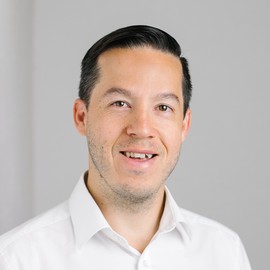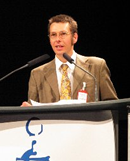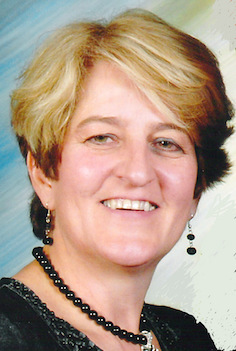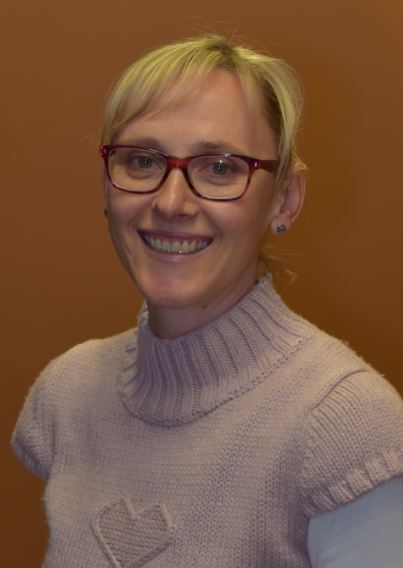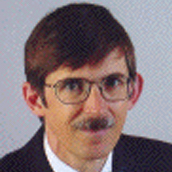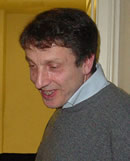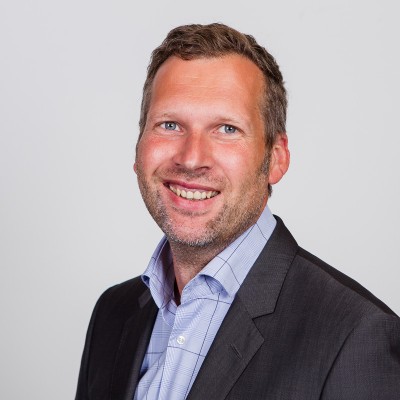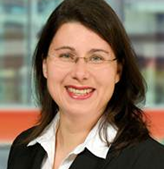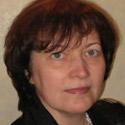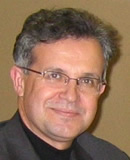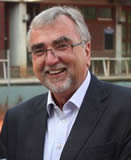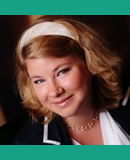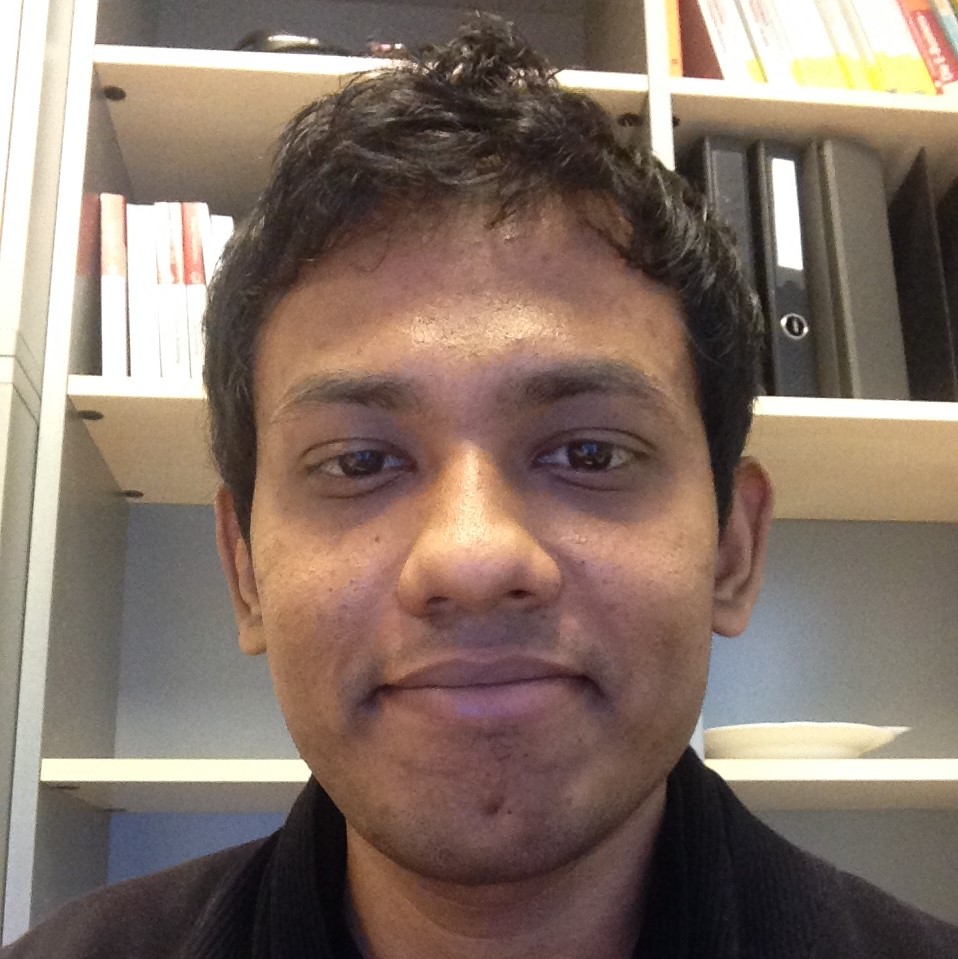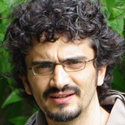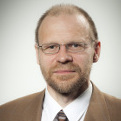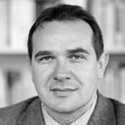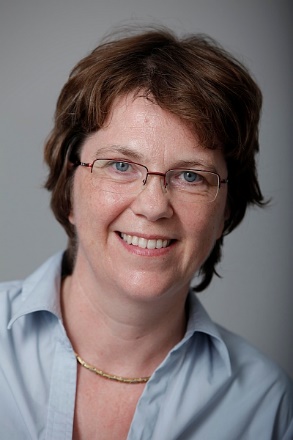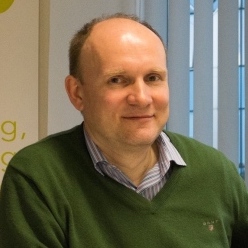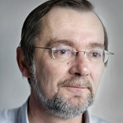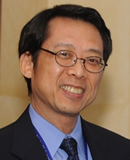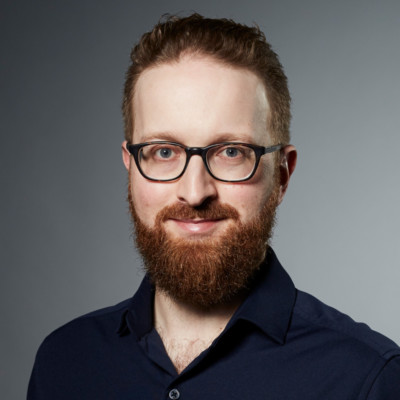Abstracts
Have a look at the lecture abstracts of this year's edition and explore the profiles of the presenters!
All times are UTC+2 (Vienna, CEST - Central European Summertime).
The benefits of domain-specific modelling methods – as a complement to general purpose and de-factor standard modelling methods like UML BPMN are doubtless. The process from an idea over the design up to the deployment of new modelling methods is referred to as the modelling method conceptualization. A vital part in this conceptualisation is the design of the meta model. Meta models formally specify the syntactic backbone of a modelling language by introducing the relevant modelling language concepts and by constraining the meaningful relationships between them. Meta model design decisions determine not only syntactic expressiveness of modelling languages but dictate also how their usage by modellers. While lots of research can be found focussing on the effect of notational aspects on modelling language’s usability and intuitiveness, guidelines and best practices for meta model design are still scarce. This talk will contribute bridging that research gap by reporting on the results of analysing 40 meta models of the Open Models Laboratory (OMiLAB). All meta models have been developed with the ADOxx metamodeling platform. The goal of this talk is to provide a set of generic meta model design patterns that can be employed in any modelling method conceptualization. For practical feasibility, a Smart City meta model will be utilized, thereby building a bridge between the this lecture and the OMiLAB@work practical sessions at the end of the first Summer School week.
Lecture at NEMO2018
Date/Time: Monday, July 16, 2018 at 16:30 UTC+2/CEST
The current industrial transition towards Factories of the Future (FoF) implies strong transformation of enterprise Business Models within the manufacturing sector. Product Service Systems are a key component of this transition, and contribute to renovate both the underlying enterprise models and the needs of enterprise engineering tools. The objective of the lecture is to articulate the overall needs of transition towards FoF with the requirements for innovative conceptual modelling approaches and new enterprise engineering methods and tools. The lecture will first give a synthetic insight on PSS within the context of FoF, to make it possible for the audience to understand the key concepts of PSS and key industrial needs for developing innovative enterprise modelling and engineering solutions. The second part of the lecture articulates two dimensions of Enterprise engineering: an advanced modelling method dedicated to support PSS design and engineering (based on a PSS-oriented meta-model) and a decision-making approach for PSS economic-model balancing.
Lecture at NEMO2018
Date/Time: Tuesday, July 24, 2018 at 10:00 UTC+2/CEST
The interplay between ontologies and domain-specific conceptual modelling languages was traditionally concerned with the challenge of “ontological commitment” - i.e., the language is expected to have some ontological qualities, in order to enforce coherence and consistency in model contents. An alternative approach to coupling the two worlds will be promoted by this lecture, motivated by pragmatic semantic interoperability and knowledge externalisation requirements: agile modelling languages are treated here as means of knowledge representation that are amenable to reasoning, linking and publishing through techniques that have been established by the Semantic Web paradigm - i.e., RDF graph databases, OWL axioms, SPARQL queries and endpoints. The presentation highlights the benefits of combining the Agile Modelling Method Engineering Framework with the Resource Description Framework in order to build novel knowledge acquisition methods. The lecture will present results originally proposed in the context of the ComVantage FP7 research project and further developed in follow-up projects.
Lecture at NEMO2018
Date/Time: Wednesday, July 25, 2018 at 10:00 UTC+2/CEST
In this talk an introduction to semantic-based modeling and the SeMFIS platform will be given. At its core, semantic-based modeling characterizes the use of semi-formal conceptual models together with formal semantic schemata such as ontologies, thesauri or controlled vocabularies. The talk will enable participants to understand the theoretical and practical foundations for applying semantic-based modeling to the design and analysis of information systems. In particular it will be reverted to the ADOxx-based SeMFIS platform that constitutes a flexible engineering platform for realizing semantic annotations of conceptual models and that is provided for free via OMiLAB (http://semfis-platform.org/). The approach will be illustrated with applications in semantic business process management, semantic-based simulation and semantic visualization of enterprise models.
Lecture at NEMO2018
Date/Time: Thursday, July 19, 2018 at 10:00 UTC+2/CEST
While it is undisputed that today’s enterprises depend crucially on IT, many companies still struggle with exploiting the potential of IT to a full extent. On the one hand, that requires adapting IT infrastructures of ever increasing complexity to changing needs of the business, on the other hand, it recommends rethinking organisational structures and business processes to create new opportunities for the efficient use of IT. In the long run, the digital transformation may even require to reinvent the entire business model, which will usually imply a major restructuring of a company and its IT. IT-Business alignment can be mastered only, if a professional perspective on the business is combined with elaborate knowledge of the IT. The field of enterprise modelling is addressing this demand by integrating models of the business, such as goal models or business process models, with models of the IT, such as models of the IT infrastructure, object models etc. In his talk, Ulrich Frank, will give an overview of “Multi-Perspective Enterprise Modelling” (MEMO) to demonstrate how enterprise models support various kinds of business and IT related analyses that support both, IT managers and line managers and that thereby serve as a pivotal instrument to foster IT business alignment. For this purpose, he will give an overview of the domain-specific modelling languages that are part of MEMO, the language architecture and the language specification.
Lecture at NEMO2018
Date/Time: Tuesday, July 17, 2018 at 10:00 UTC+2/CEST
Changing customer needs and technology disruption, as well as a highly competitive market setting and the emergence of platform business models are only a few challenges today’s enterprises must face. In addition to these external factors, enterprises are experienced increasing complexity internally, for instance consisting of several components that need to be integrated and aligned. In order to survive, enterprises or businesses need to be agile enough to swiftly adapt to changing operating environments. Enterprise Architecture Management (EAM) is a research field that focuses on assisting modern enterprises to deal with an increasing complex internal and external operating environment. One mechanism used to deal with complexity is enterprise architecture (EA) modeling and EAM uses such modeling to capture and reason about the fundamental aspects of an enterprise as well as communicate with all stakeholders. Modeling methods simplifies a complex reality by focusing only on relevant aspects such as the IT landscape and its alignment with business processes and business strategy. Enterprise modeling is time and resource consuming and requires highly skilled enterprise architects that understand all aspects of a business. Given the demands of enterprise agility, it is crucial that the enterprise modeling tasks are executed timeously and the use and reuse of suitable EA models and meta-models, as well as suitable modeling platforms are essential. In this presentation the audience will be introduced to EAM and the essential role EAM fulfill to assist businesses to survive change through the use of modeling and modeling platforms.
Lecture at NEMO2018
Date/Time: Thursday, July 26, 2018 at 10:00 UTC+2/CEST
Requirements Engineering (RE) has been applied with remarkable success for specifying the requirements for systems or products. However, as RE has traditionally been performed as a heavy-weight, upfront process for creating a comprehensive specification, it has been criticized or even declared obsolete in recent years, particularly by the proponents of agile development. In this talk, I will shed light on the role of requirements in today’s digital world and discuss how modern RE can contribute to shaping, evolving and sustaining digital systems and products. I will also discuss how this relates to enterprise modeling.
Lecture at NEMO2018
Date/Time: Tuesday, July 17, 2018 at 15:00 UTC+2/CEST
Enterprises increasingly offer IT-intensive services in network. For example Netflix heavily relies on IT, and requires partners such as Internet access providers and hosting providers. We present a methodology, called e3value to conceptualize such a network in terms of commercial actors, and what they exchange of economic value with each other. However, most business networks are subject to risk of fraud. Therefore, we also analyse this risk using an extension of e3value, called e3fraud. After this talk, you will know the most important terminology used to express business models and their associated risks.
Lecture at NEMO2018
Date/Time: Monday, July 23, 2018 at 14:00 UTC+2/CEST
Business Process Modelling (BPM) and Business Intelligence (BI) are two important areas in business informatics, which are treated, often rather separated from each other. Looking at the literature and the activities in the two areas shows that process modelling takes a look at the business from a more production and organizational oriented view, whereas business intelligence activities emphasize more the role of the customer in the business process. In this lecture we want to take a unified view onto these two approaches and show how BPM and BI support each other. For demonstration we use the activities of data understanding and data provisioning which are at the beginning of any BI activity. Due to the abundance of data on the Internet integration of traditional data sources and big data is a challenging task. We present a process model for data integration and show how this model can be realized using the ADOxx platform. The basic idea of the model is simultaneous processing of the data workflow and the associated workflow of the metadata which describe the data processing activities. Such a model supports better understanding of the data and extends traditional methods for accessing data quality.
Lecture at NEMO2018
Date/Time: Thursday, July 26, 2018 at 09:00 UTC+2/CEST

University of Applied Sciences and Arts Northwestern Switzerland FHNW, Switzerland
Modelling Knowledge Work is based on two principles: (1) the separation of business logic and process logic and (2) the support of both structured and unstructured knowledge. Case management is the management of long-lived, non-structured collaborative processes that require knowledge and information. The path of case execution cannot be predefined but depends on human skills and judgment. The OMG recently developed the Case Management Modelling and Notation (CMMN). For real processes, however, there is no strict separation between structured processes and cases. The lecture will show how case modelling can be integrated with business process modelling in BPMN. Decision-aware business processes separate business logic from process flow, making process models simpler and easier to modify. This can be achieved by combining process modelling with decision modelling (e.g. using DMN) and having decision data available in structured format. The modelling of knowledge work will be demonstrated with the Knowledge Work Designer.
Lecture at NEMO2018
Date/Time: Thursday, July 19, 2018 at 09:00 UTC+2/CEST
Business Process Improvement (BPI) ranks among the topics of highest priority in modern organizations. However, considering the rapidly changing customer requirements in times of high market transparency and the increasing collaboration between organizations, the conduction of BPI projects has become very challenging. Implicit process knowledge from diverse process participants needs to be elicited and transformed into improvement opportunities. In this context, the results achieved need to be properly documented, communicated and processed throughout a company. The purpose of the lecture is to present a conceptual solution (called “BPI roadmap”), which is a means for systematically performing BPI initiatives based on a set of easy-to-use and proven BPI techniques. In the in the tool “RUPERT” (Regensburg University Process Excellence and Reengineering Toolkit), the BPI techniques are realized in form of corresponding model types. The lecture gives insights into the development of the “BPI roadmap” and “RUPERT” and demonstrates the tool’s functionality by referring to a use case stemming from a cooperation project.
Lecture at NEMO2018
Date/Time: Tuesday, July 24, 2018 at 09:00 UTC+2/CEST
As the paradigm of enterprise modelling originally envisioned, a hybridization of modelling approaches is needed in order to cover the multiple facets of a business view, its context and requirements for different types of resources - including IT services and infrastructure. The “modelling method framework” [Karagiannis/Kühn, 2002] establishes key building blocks - i.e. the modelling language, the modelling procedure and mechanisms/ algorithms - to enable the required hybrid modelling and to increase the value of models beyond their traditional functions. As the importance of Next Generation Enterprise Modelling in the age of the Internet of Things, Industry 4.0, Industrial 3-D printing etc. increases, new modelling capabilities, semantically enriched design concepts and adapted operational functionality must satisfy evolving needs, in order to successfully manage not only the transformation in the digital enterprise stage, but also the adaptation and extension of existing services. In this context, the foundations of a „conceptual-model“-awareness approach for next generation enterprise information systems will be presented. This novel approach makes use of semantic networks to extend model-awareness towards arbitrary types of models that are developed for specialized communities aiming for domain-specificity (or even case-specificity) in their modelling language, therefore favoring productivity at the expense of reusability across domains. The technological space for capturing and bridging knowledge through model semantics is primarily based on diagrammatic models. Two categories of models are employed in this context: (1) Models of Concepts for describing a common understanding of a domain through its concepts and relations; (2) Models that use Concepts are typically domain-specific models based on some already established understanding of the domain. The hereby introduced life cycle of Agile Modeling Method Engineering - AMME [PCI2015] aims to apply the principle of agility established in Software Engineering (e.g., evolutionary development, flexible response to change) to the practice of Modelling Method Engineering. The main assumption is that a modelling method may evolve iteratively based on changing modelling requirements and feedback loops. Within the context of AMME, a full methodological approach is established by the OMiLAB (http://www.omilab.org), with a life cycle encompassing five phases: (1) create, (2) design, (3) formalize, (4), develop and (5) deploy/validate. The approach is supported, in its fast prototyping stage, by the metamodeling domain-specific language MM-DSL and the meta-modelling platform ADOxx (http://www.adoxx.org).
Lecture at NEMO2018
Date/Time: Monday, July 16, 2018 at 10:00 UTC+2/CEST
While many people have not even heard about it and others think that it is just another buzz word from the Silicon Valley, the blockchain - in fact - has the potential to disrupt many if not all industries. This is because the blockchain fundamentally changes the way, how (financial) transactions are taking place. The concept of blockchain arouse from the need for a trusted ledger to authenticate transactions without a central authority. It’s concept and technology bears many advantages, such as: near-instantaneous transactions, greater operational efficiency and reduced transaction costs, transaction verification without a central authority and protection against single points of failure. Although the blockchain gained interest in the financial industry first, meanwhile more and more industries are about to discover the potential of the blockchain. Countless start-ups are inspired by the blockchain to build their business idea on it and improve its concept and technology. As such, we can most certainly expect the emergence of a diverse eco-system built on the blockchain.
Lecture at NEMO2018
Date/Time: Monday, July 23, 2018 at 16:30 UTC+2/CEST
Regarding information security, the role of enterprise models is twofold: (1) the enterprise models can reflect information about security solutions in enterprise information systems and (2) the enterprise models, at the meta-level, is information that has to be properly managed from the point of view of security, i.e., it has to be clear how availability, confidentiality and other security related factors are handled with respect to particular models. To illustrate how enterprise models can be used in caring for security in information systems, several security requirements patterns will be discussed focusing on the relationships between the information flow in the patterns and the corresponding enterprise model elements. The issues of enterprise model security, at the meta-level, will be explained using the FREEDOM framework, which has been developed for continuous requirements engineering. The framework concerns As-Is and To-Be enterprise models that are used in such functions as requirements engineering, fulfillment engineering, design and development, operations, and management.
Lecture at NEMO2018
Date/Time: Thursday, July 26, 2018 at 16:30 UTC+2/CEST
In the last decade, the interest and effort towards the use of ontology-based solutions for knowledge management has significantly increased. Ontologies have been used in manufacturing to provide a formal representation of the domain knowledge in a way that is machine-understandable. However, despite the ability to formally represent the elements of a domain and their relations, ontologies themselves do not provide any kind of simulation and systems behaviour analysis capabilities. Manufacturing system knowledge may be translated into specific executable models by exploiting experience and human logical deduction. This can be also achieved using ontologies and semantic reasoning. The framework presented in this work aims to explore a W3C standard for inference rules, such as Semantic Web Rule Language (SWRL), and OWL ontology models to transform elements of a Knowledge-Base (KB) into Petri Net (PN) primitives. The combination of semantics and mathematical modelling techniques applied to the analysis of a simple automated assembly station highlights the existence of modelling patterns and the effectiveness of inference rules to automatically instantiate PN-based manufacturing system models.
Lecture at NEMO2018
Date/Time: Monday, July 16, 2018 at 14:00 UTC+2/CEST
In general, process algebra can be the most suitable formal method to specify IoT systems due to the equivalent notion of processes as things. However there are some limitations for distributed mobile real-time IoT systems. For example, Timed pi-Calculus has capability of specifying time property, but is lack of direct specifying both execution time of action and mobility of process at the same time. And d-Calculus has capability of specifying mobility of process itself, but is lack of specifying various time properties of both action and process, such as, ready time, timeout, execution time, deadline, as well as priority and repetition. In order to overcome the limitations, this lecture presents a process algebra, called, dT-Calculus, extended from d-Calculus, by providing with capability of specifying the set of time properties, as well as priority and repetition. Further the method is implemented as a tool, called SAVE, on the ADOxx meta-modeling platform. It can be considered one of the most practical and innovative approaches to model distributed mobile real-time IoT systems.
Lecture at NEMO2018
Date/Time: Wednesday, July 25, 2018 at 14:00 UTC+2/CEST
The NEMO 2018 lecture and associated exercise concerns an approach to the application of conceptual modelling known as the Capability Oriented Requirements Engineering (CORE) approach. The conceptual modelling framework applied in CORE employs a set of complimentary and intertwined modelling paradigms based on enterprise capabilities, goals, actors, and information objects. The lecture will define the foundational concepts of CORE as well as the way of working from capturing textual descriptions from stakeholders, progressing to formally defining models of early requirements, based on the CORE meta-model, and in a stepwise refinement define functional and non-functional requirements of desired systems. The theory will be supplemented by examples from a real application of CORE on a Cyber Physical Production System.
Lecture at NEMO2018
Date/Time: Tuesday, July 24, 2018 at 14:00 UTC+2/CEST
For many years, the most favorable conceptual data model is widely-used Entity-Relationship (ER) data model. A typical scenario of a database schema design process provided by majority of existing CASE tools is to create an ER database schema first and then transform it into the relational database schema and then to the executable database scripts. Such a scenario has many advantages, but also there are serious disadvantages. To overcome them, we discuss here an alternative approach and related techniques that are mainly based on the usage of Model Driven Software Development and Domain Specific Language paradigms. The main idea is to provide the necessary Platform Independent Model meta-level concepts to IS designers, so that they can easily model semantics in an application domain and then apply a number of complex algorithms to produce database schema specifications and IS executable code, without any considerable expert knowledge, by application of a chain of model-to-model and model-to-code transformations.
Lecture at NEMO2018
Date/Time: Wednesday, July 18, 2018 at 15:00 UTC+2/CEST
We define Japanese creative services and discuss how they have been sustained successfully and its application to global service enhancement. There are many ``Shinise’’ (shops of long standing) service companies in Japan that are quite unique compared to the companies located in any other geographical region. They typically have anecdotal values based on nature and seasons, various types of culture, histories, and/or lifestyles. Several Japanese creative services are expanding their activities toward global markets. We explain the mechanisms of the sustainability and scalability of advanced cases of Japanese Creative Services. A key aspect of the mechanism is a communication between service providers and consumers based on sharing/interpreting/utilizing of tacit context in a community. For analyzing the key aspect, we propose the combined approach of sociology/anthropology, psychology, engineering and design thinking. We developed a meta-modeling platform for handling the combined analysis of the Japanese Creative Services. We believe that this kind of approach will contribute to creating new values within the field of service science and for value-added global services.
Lecture at NEMO2018
Date/Time: Wednesday, July 18, 2018 at 16:30 UTC+2/CEST
Ambient Assistance is a challenging field for software engineers and computer scientists in both, research and application, with lots of ques-tions to answer and technical solutions to find. The range of applications is broad and covers everyday situations in private and business envi-ronments as well as support for people with special needs. Using smart sensor based Activity Recognition Systems, life video analysis tech-niques as well as speech recognition human cen-tred assistance becomes feasible and affordable. Dealing with the support of humans, it is an in-terdisciplinary field affecting Psychology, Neu-rology, Medicine, Law, Philosophy, and others more. Models play a key role in ambient assistance sys-tems as they act as the integral means for data and knowledge acquisition, representation, evaluation and exchange for the various system components. The lecture will start with a short overview of already existing best practice examples and then work out the key notions and concepts that form the basis for domain specific modelling in this field concerning both, the application domain as well as the interfaces of an integrated ambient assistance system. A model-centered architecture for such kind of digital ecosystems will be presented. Students will gain deeper insight in two additional Parallel Working Groups that are headed by Dr. Judith Michael and Suneth Ranasinghe MSc.
Lecture at NEMO2018
Date/Time: Monday, July 23, 2018 at 10:00 UTC+2/CEST
Business processes in the age of the internet are typically not restricted to single organizations but cross organizational borders to customers, suppliers and other organizations. The design of business processes for these business communities is a complex collaborative task, which requires special methodological support. This course introduces Horus, which includes a set of modeling methods and languages to support the whole life cycle of business processes within business communities. Horus is based on high-level Petri Nets for procedure modeling and provides additional modeling support for objects, resources, organizational structures, business goals and business rules. Simulation based concepts are provided to evaluate models. Besides describing the basic concepts of Horus, the course also gives an overview about ongoing research work.
Lecture at NEMO2018
Date/Time: Wednesday, July 25, 2018 at 09:00 UTC+2/CEST
The modelling of knowledge, action and time is a topic of current research within the broader domain of knowledge representation and reasoning. The course will focus on declarative approaches for modelling and reasoning with change, paying particular attention to the integration of knowledge and action. As time is inherent in any type of activity and process, the course will also deal with the representation of temporal properties that characterize the occurrence of actions and the knowledge they generate. Practical aspects of reasoning about knowledge, action and time will be discussed in the context of solving constraint satisfaction problems for business process optimization. Students will have the ability to work with software implementing non-monotonic and event-based formalisms, and to understand the benefits of coupling such tools and methodologies with modelling tools, like the ADOxx metamodelling platform.
Lecture at NEMO2018
Date/Time: Monday, July 23, 2018 at 15:00 UTC+2/CEST
Problems discovered during the modeling phase permit to save a lot of money with respect to issues discovered later, and when specific deployment activities are already in place. For such a reason it is in general important to complement modeling methods with strategies to check their qualities, and in particular with automatic tools permitting to spot possible issues. The lesson, after a general introduction, will focus on the Business Process Modeling Notation, and qualities such as understandability and correctness. Understandability will be introduced considering a specific guidelines framework that provides suggestions on how to derive BPMN models that are easier to understand. Correctness will be discussed considering a formal semantics developed according to the SOS style and to the possibility to automatically check general properties such as safeness and soundness, as well as domain specific properties.
Lecture at NEMO2018
Date/Time: Wednesday, July 18, 2018 at 09:00 UTC+2/CEST
Enterprise models are ussed to represent different aspects of /related-to an organisation / enterprise. Such enterprise models typically take the form of conceptual models expressed in terms of a more specialised, purpose specific, modelling language. In general, such modelling languages, force modellers to “reduce” the models to mere boxes-and-lines diagrams, where it is left to the names in / on the boxes to provide a linkage to semantically richness, and nuances, of the domain being modelled. In this lecture, we discuss the strategy to ground enterprise models in purpose / domain specific languages on top of a conceptual model expressed in a more generic domain modelling language, where the latter allows modellers to include richer verbalisations of the concepts and their relationships. This will be illustrated in terms of example models in the ArchiMate language, while grounding these on models expressed in the well known fact-based modelling language ORM.
Lecture at NEMO2018
Date/Time: Thursday, July 26, 2018 at 15:00 UTC+2/CEST
The basic notions of the NEMO summer school include the terms of enterprise modeling, modeling methods, etc. We start with some general observations about those notions and their role in (business) informatics. The second part of this contribution is dedicated to foundations of conceptual modeling. Here we pose the question of what the very basics of (discrete) models are, and how a systematic setting of modeling techniques, in particular for enterprise models, may be achieved. A business process is usually composed of workflows. A reasonable workflow is sound: a sound workflow can always reach its terminal state, and upon termination, no “garbage” remains. We present methods to adequately model and analyze workflows, in particular a most liberal composition operator for workflows that preserves soundness (i.e. composition of two sound workflows is a sound workflow again). This allows to stay in the world of sound workflows during the construction of large workflows and business processes.
Lecture at NEMO2018
Date/Time: Monday, July 16, 2018 at 11:30 UTC+2/CEST
Collaboration between robots of different domains is necessary in many disaster scenarios, for example by utilizing unmanned aerial vehicles (UAVs) for coarse area mapping and using unmanned ground and surface vehicles (UGVs and USVs) to perform environment manipulation. In this talk I will consider challenges with robots operating on harsh environment collaborating with humans and other robots. There are numerous robotics competitions, ranging from those of mainly educational purpose (e.g. FIRST Robotics Competition, World Robot Olympiad, BEST) to those whose goal is to inspire and promote new cutting-edge research with significant prizes (e.g. DARPA Robotics Challenge ) with numerous competitions being some mixture of the these two goals (e.g. NASA The Centennial Challenges, Intelligent Ground Vehicle Competition,International Autonomous Robot Racing Challenge , RoboRAVE , RoboGames , RoboCup ,VEX Robotics Competition, RoboSub , MATE, SAUC-E , Maritime RobotX Challenge, RoboBoat , International Aerial Robotics Competition, Student Unmanned Air System, UAV Outback Challenge ). ERL Emergency is a competition of this mixed category and its participants range from university students to experienced academic and industry professionals. Amongst all the listed competitions, ERL Emergency is unique in its incorporation of all the three main robotics domains of air, land and water. In ERL Emergency, successful teams must be able to set up and use highly heterogeneous and interconnected robots to complete highly complex search-and-rescue (SAR) and other emergency related tasks in varied environments. In short, ERL Emergency tests the capabilities of multi-robot systems (MRS) in SAR and other disaster scenarios. In this talk, the challenges and hands-on experiences on realistic scenarios and terrains are presented. It includes a series of event arrange in ELROB (European Land Robot Trial), euRathlon and now under umbrella of ERL (ERL Emergency a competition that tests the capabilities of multi-robot systems (MRS) in SAR and other disaster scenarios). Also a new testing site, OuluZone, where the harsh weather conditions, unevenness on terrain and dynamic driving conditions challenge outdoor robots. Our aim is to provide reliable operation in any conditions. An ultimate goal is to provide a driving license for autonomous heavy machines.
Lecture at NEMO2018
Date/Time: Thursday, July 19, 2018 at 15:00 UTC+2/CEST
The lecture introduces students to developing new modelling languages through Domain Specific Modelling approach with MetaEdit+ platform. During this lecture the students will get an overview of working with MetaEdit+ when developing DSM’s and they can develop a support environment for their own modelling language through an exercise. The tool allows language developers to rapidly build and evolve their methods and then try them out on the fly. As an example of a developed language I use an enterprise architecture language for strategic architecture in the health care domain.
Lecture at NEMO2018
Date/Time: Tuesday, July 24, 2018 at 16:30 UTC+2/CEST
Modeling is key for any engineering discipline to design a system and to early understand its quality. Effective modeling needs appropriate modeling languages, because as already Wittgenstein said: “The borders of my language are the borders of my world.” General consensus of model-driven engineering is, that domain-specific modeling languages help to reduce the “conceptual gap” between problem domains and software implementation. In this talk, we examine advances in how the concepts for language definition have evolved, and how the tool implementation are assisted by modern language workbenches. We examine concepts like language reuse, composition, refinement, extension, management of language variants and how to migrate models between versions.
Lecture at NEMO2018
Date/Time: Tuesday, July 24, 2018 at 15:00 UTC+2/CEST
Conceptual modelling is an example of such complex learning task as it requires rigorous analytical skills and experience to externalize requirements into high-quality formal representations - conceptual models. These skills are very difficult to teach to novice modellers mainly due to the lack of tools that can continuously guide them in the learning process. In this talk I will address the scaffolding of CM learning, based on Bloom’s revised taxonomy. This will be paired with a report about the use of automated feedback and simuation to guide the student’s learning process for conceptual modelling. Furthermore, lessons from student modelling behaviour as observed from logging the modelling process of students will be presented. The findings include a set of typical modeling and validation patterns that can be used to improve teaching guidance for domain modeling courses. From a scientific viewpoint, the outcomes of the work can be inspirational outside of the area of domain modeling as learning event data is becoming readily available through virtual learning environments and other information systems.
Lecture at NEMO2018
Date/Time: Wednesday, July 18, 2018 at 14:00 UTC+2/CEST
Companies are often involved in Enterprise Modeling (EM) activities that address various business problems usually relayed to business and IT development or improvement of the quality of business operations. This can be done from a number of perspectives, e.g., strategy (goals, challenges, opportunities), business operations (processes, actors, resources), information (concepts, products), information technology (requirements, components), etc. However, to develop efficient solutions and to ensure their fit, all of these perspectives need to be analyzed in an integrated way, which is a core principle of EM. In practice, EM activities often involve groups of people, i.e. the models are created in a participatory way. This presentation will discus participatory EM and the 4EM method with a particular focus on modeling business strategies.
Lecture at NEMO2018
Date/Time: Wednesday, July 18, 2018 at 10:00 UTC+2/CEST
Modelling business processes is essential for business effectiveness and efficiency. But not all business processes can easily be modelled as simple arrangements of flows and activities. Business processes, and certainly knowledge-intensive processes, incorporate lots of decisions and decision knowledge, that should not be hidden in process flows or activities, because hardcoding (decision) rules in processes leads to complex and inflexible process models. In analogy with the Business Process Modelling & Notation Standard (BPMN), a Decision Model & Notation standard (DMN) was developed, that allows to model the decisions separately, thereby simplifying the process model. A decision model describes business decisions, with their interrelationships and requirements, together with the detailed decision logic used to make the decision. This session is about the basics of decision modelling, but mainly about how decision models and process models should be combined (and separated) into an integrated model of processes and decisions.
Lecture at NEMO2018
Date/Time: Thursday, July 19, 2018 at 16:30 UTC+2/CEST
Service-dominant (S-D) logic re-conceptualizes the notion of economic exchange. The cornerstone of this reorientation is the concept of value co-creation-a collaborative process of reciprocal value creation among various actors. Owing to S-D logic’s significance, information systems (IS) research discusses its implications on understanding, designing and managing IS. However, an equivocal understanding of value co-creation’s foundations, semantics, and use emphasizes its underlying conceptual ambiguity in IS and marketing research. We discuss the phenomenon of value co-creation, how value co-creation can be conceptualized and how IS development for supporting value co-creation can be supported by designing a suitable ontology, derive a taxonomy, and propose design principles.
Lecture at NEMO2018
Date/Time: Thursday, July 26, 2018 at 14:00 UTC+2/CEST
We are developing PRactical INTEligent aPplicationS (PRINTEPS), which is a user-centric platform to develop integrated intelligent applications only by combining four types of modules such as knowledge-based reasoning, speech dialog, image sensing and motion management. PRINTEPS supports end users to participate in AI applications design and to develop applications easily. This lecture introduces the architecture and applications of PRINTEPS for robot cafe and teaching assistant robot.
Lecture at NEMO2018
Date/Time: Thursday, July 19, 2018 at 14:00 UTC+2/CEST
Complex IT systems today interconnect numerous devices, systems, and data sources to serve many stakeholders. Understanding the needs and wants of diverse stakeholders is a prerequisite for building successful and sustainable systems. In this lecture I will present a goal-oriented approach to enterprise modeling. We start with foundations in goal-based approaches to requirements engineering. An overview of the i* (iStar) strategic actors modeling language will then be presented, with examples of analysis and design in enterprise contexts. More complex examples will include using i* to model and analyze enterprise capabilities, as well as coopetition in business ecosystems.
Lecture at NEMO2018
Date/Time: Tuesday, July 17, 2018 at 09:00 UTC+2/CEST
A significant objective of today’s enterprise Information Systems (IS) is to be congruent with the business environments which they are meant to support. A major concern is how Information Systems can successfully adapt to support frequent variations in business conditions originating, for instance, from changes in customers’ demand, environmental aspects, regulations, and many others. The need for enterprises to operate in changing environments has been addressed by proposing a capability-oriented approach that integrates organizational development with IS development taking into account changes in the application context of the solution. It requires a number of organizational concepts to be modelled, such as business goals, processes, resources, Key Performance Indicators (KPIs), as well as the data for describing business environmental contexts for organizations capabilities. In the lecture, I intend to outline the capability-oriented approach for supporting model-driven organisations, as well as to present the current experiences of developing capability-oriented enterprise models in industrial and data-driven cases.
Lecture at NEMO2018
Date/Time: Tuesday, July 17, 2018 at 14:00 UTC+2/CEST
Understanding and describing requirements is probably the greatest challenge in a software development project. Only well-known and well-understood requirements can be successfully implemented. Even if we select a standard software to support our customers, the right requirements are significant. Requirements engineering is a learning and communication process for us. A precondition for this is feedback – whether in direct dialogue or by informative requirements documents. The domain experts need to validate the requirements documentation so that it is possible to detect mistakes and misunderstandings. With Domain Storytelling we use the principles of learning a new human language. Let experts tell their domain stories. While listening, we record the domain stories using a pictographic language. The domain experts can see immediately whether we have understood their story correctly. After very few stories, we will be able to talk about people, tasks, tools, work items, and events in a domain. Domain Storytelling is an example-based approach for modelling selected business processes and their IT support. The models are easy to understand for people in different departments, business organizations and their specialists alike. The method aims at common understanding and communication about the processes which are modelled. Characteristics of Domain Storytelling are: (a) cooperative business processes are modelled as “cooperation pictures” based on selected scenarios, (b) simple pictograms make models easy to comprehend, (c) processes are structured along the lines of “who makes what with whom”. The initial lecture will present the conceptual basis of Domain Storytelling, putting business process modelling into the context of application-oriented software development. It will characterize software development as a learning and communication process with a strong need for feedback among all parties concerned. The basic principles and concepts of Domain Storytelling will be explained. The tutorial will provide hands-on experience.
Lecture at NEMO2018
Date/Time: Monday, July 23, 2018 at 09:00 UTC+2/CEST

